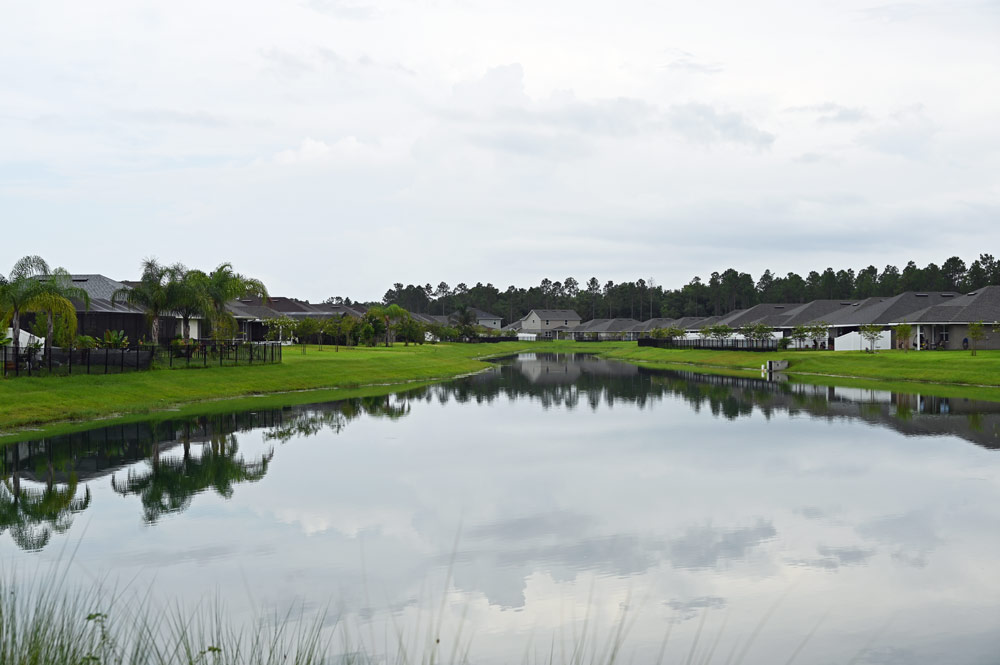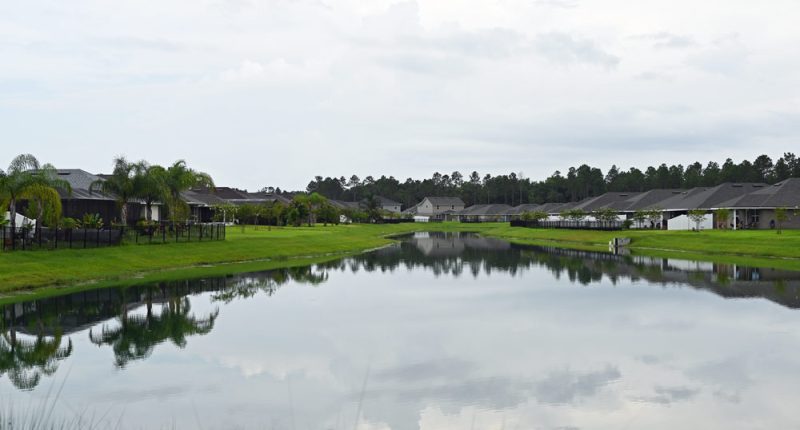
The proposed 12.6 million-gallon gas and diesel depot off U.S. 1 has quickly gone from an economic development triumph, as Palm Coast and county officials described it last week, to a political liability fueled by public opposition spreading at the speed of a wildfire.
On Tuesday, the Palm Coast City Council agreed to seek an analysis to determine whether there’s an alternative location better suited to the depot, a planned $75 million facility to be built by a start-up, Belvedere Terminals, with no track record in the industry.
The facility, rejected from Hull Road in Ormond Beach, is planned on 78 acres at the end of Peavey Grade and by a rail yard to be built there. It would be about 3,500 feet from one of the city’s three water plants in one direction and an equal distance from city water wells in the other, south of the Sawmill Creek subdivision and east of acreage planned for the city’s mostly residential westward expansion.
The city has limited land zoned industrial, as the entirety of that acreage is. Mayor Mike Norris is championing the project and fears that moving it would jeopardize Palm Coast’s chances to land it. But three other council members are concerned about the location, the vetting of the project–and the company–and the public outcry, of which they got a sample Tuesday at the meeting.
It took just a few days from the project announcement for an opposition Facebook page to emerge (“Palm Coast Citizens Against Belvedere Fuel Terminals / Grupo Mexico.” Grupo Mexico owns the Jacksonville-based Florida East Coast Railway, on whose tracks Belvedere’s 125-car trains would run and deliver the fuel to Palm Coast once a week.)
Council members have themselves quickly taken the measure of a potential new crisis on their hands, this one entirely on their watch: they are not interested in a fresh, long-running controversy just as they are resolving or distancing themselves from those they inherited. Though Norris tried to blame previous councils for putting this council in a difficult position (by rezoning industrial land to residential), the Belvedere project is entirely this council’s work, or liability, as even Norris is happily taking credit for it.
Drawing applause from the audience, Council member Theresa Pontieri called for a site-selection analysis “to look at a better place for this plant” in light of the 20,000 acres to its west where the westward expansion is planned. “We all understand the concerns. I know the mayor has worked pretty hard to help to bring this type of thing to the community. So let’s look at all options. I can guarantee you, we’re all going to do a lot of research, do our diligence, look into the company, the parent company, the environmental concerns, all of these things that you all are concerned about. I won’t speak for anybody else up here, but I’m concerned about them.”
Pontieri said the alternative site could be further west or in Bunnell. “Let’s really analyze this and make sure that this is appropriate in this community, and see if there’s other locations that are possible,” she said. “Let me be very clear: I support bringing in industry like this. What I do not support is doing it too quickly, and it proposing environmental and safety hazards. “ She visited the site over the weekend and was concerned about what she saw. “We’d be selling ourselves short if we just automatically say, this is where it’s going to be. And we don’t do a site selection.”
Norris was worried about the timeline, with the company going before the County Commission next week to secure a state $10 million grant that will subsidize buying the land. Interim City Manager Lauren Johnston assured the council that time isn’t an issue: The grant expires in June 2026. “They have 180 days to close, and after closing, they have 90 days to provide the budget and construction development details to the state,” Johnston said. “It sounds like we have some time in there if you would like to move forward with this site analysis study.”
Council members Ty Miller and Charles Gambaro are also weighing their words carefully about the plan, and support the analysis.
“This is a difficult one,” Miller said, recalling how the zoning in that area of U.S. 1 was at one point all industrial, but was then changed to residential in many areas, “which in my eyes should have never happened, because what it does is now it creates a inconsistency of land use adjacent to each other.” Potentially, he said, what remains of that industrially zoned land may never be usable, “because the residents that live on these residential areas right adjacent to it, don’t want the industrial and obviously will come out in force to let us know about that. And so it puts us in a very tight spot, because the only places we can put industry are on these industrial zone properties.”
Miller sought to reassure residents even as he cautioned that industrial development of some sort will come to these parcels, since they’re among the few left in the city. “I hear you about the concern for risk, safety, those things, and we haven’t made any decisions on the council at all in regards to this,” he said. “There is time for this to be discussed and figured out.”
Gambaro drew on his own background as a logistics officer in the military, said without hesitation: “There are risks associated with it,” which must be studied and mitigated. “To the residents, I hear your concerns because I’ve lived it, okay?” Like his colleagues, he said the discussion is taking place in the context of a city looking to diversify its tax base. But he is supportive of Pontieri’s request.
“Let’s get after answering these hard questions, and see if it’s a good fit,” Gambaro said. “If we need to move it, we move it, if not then we’ll figure out a way.”
They all spoke after hearing a series of residents voice their own concerns.
Wayne Bruce, a resident of Sawmill Creek who moved there from Ormond Beach, said he was “with the struggle down there” against the Belvedere facility, when it was to be built in Ormond, “ and now I’m very concerned about what’s going to happen to our beautiful city,” with a planned 12.5 million in fuel storage capacity, according to the company’s chief financial officer. (Bruce put the figure at 13.5 million but did not cite a source.)
“This facility will be very close to existing communities and new communities,” Bruce said. “I hope in your due diligence study, that you take all this into consideration and listen to the people of this beautiful city.”
He was followed by Angela Dawson, also a resident of Sawmill Creek. “You couldn’t ask for a worse project for the city, with the possible exception of a nuclear waste dump site,” she said. “Ormond Beach, roundly rejected the proposal for all the same reasons that we should do it.” She said the Ormond Beach rejection was bipartisan, while the projected tax revenue “is not worth the risk of a single life.” (County Administrator Heidi Petito has projected at $800,000 a year overall, though that has not been verified, and the figure is likely an exaggeration.) Dawson pressed for light industry, not heavy industry.
Bradley Watson described the proposal as a “reckless development that benefits a few while harming our community.” He then tied the industrial development to residential development, seeing the two on the same plane and blaming Mayor Mike Norris for going along. He cast doubt on the tax revenue projections and described the opposition as apolitical. “We do not want this facility, and that should tell you something. We demand better. We demand that you listen to the people who put you in office,” he said.
(City and county officials have stressed that the fuel facility, as a commercial-industrial development, is not comparable to residential development, especially in one regard: it will generate significantly more property taxes and ostensibly relieve some of that burden from residential development, though in fact urban areas like Jacksonville, which include vast swaths of industrially taxed properties, have not seen lower residential property taxes, and Palm Coast’s residential taxes are relatively low, compared to the average in the state.)
Others spoke along the same lines, recalling Ormond Beach’s opposition or referring to the low number of jobs the fuel depot would bring compared to larger enterprises, and one, Ann Miller, a new resident, spoke approvingly of the plan: “It will bring jobs to the area and industry and will provide tax revenue for our city,” she said, but the city should also require Belvedere to jointly hold exercises with local first responders, who themselves should get additional training. She outlined several additional safety measures to write into a prospective contract.










